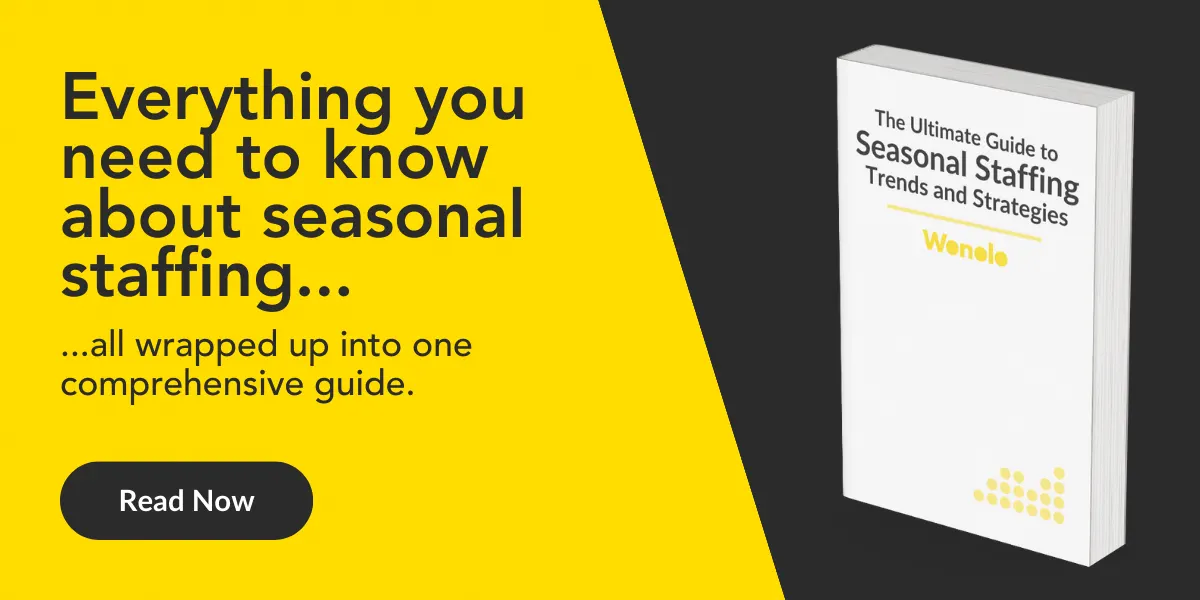Wonolo
In our last blog post, we shared the importance of having a seasonal staffing strategy to help your business conquer unexpected demand. But how do you actually go about crafting that strategy?
The first step is to pinpoint the specific peak seasons or events when your business experiences a surge in demand. Understanding the timing and intensity of these fluctuations will enable you to proactively plan for your labor needs, preventing scenarios where you have too many or too little workers.
It’s essential to analyze historical data from previous peak seasons. Look into worker records, sales data, and customer trends during those periods. This analysis will help you identify patterns and anticipate when and where additional workers may be needed.
External Factors Impacting Seasonal Needs
Seasonal staffing trends are influenced by broader economic conditions and market dynamics. For instance, an economic upswing may lead to increased consumer spending during certain periods, while global events or industry-specific factors can also impact demand. Stay updated on relevant market trends to adjust your plans accordingly.
Similarly, different industries experience seasonal peaks for various reasons. Retail may see a surge in the holiday season, while tourism and hospitality businesses may have busy periods during vacations and festive times. Understand the unique factors affecting your industry’s seasonality to make informed decisions.
Worker Preferences and Gig Economy
Similar to how the macroeconomic environment is continuously changing, it’s also essential to consider how the gig economy is evolving and what is driving workers to accept seasonal jobs.
The gig economy has reshaped the way people work, and more individuals are seeking temporary or contract-based opportunities. It has become evident that more workers are looking to exchange the rigidity of working a typical “9-to-5” job for the flexibility and freedom that the gig economy can provide.
In our Voices of the Gig Economy survey, we found that 63% of workers are looking to leave their current job in search of more flexibility. In addition, 48% are simply looking to learn new skills that they currently don’t have.
To stay competitive in the gig economy, consider offering flexible work arrangements, attractive incentives, and unique offerings to entice temporary workers to choose your jobs over others. Understanding the motivations and preferences of gig workers can help you attract the best talent during peak seasons.
Finding the Right Skill Sets for Your Jobs
As industries and consumer preferences change, the required skill sets for seasonal workers may also evolve. It is equally important to stay updated on the latest skills and competencies in your field to ensure you get the right talent for the job. To further maximize productivity, target experienced seasonal workers who possess the unique skills you require.
Additionally, advancements in technology have revolutionized the way businesses handle fluctuations in seasonal demand. Job marketplaces, like Wonolo, make it easy to connect with quality workers that meet your business’s worker specifications while minimizing the amount of administrative burden that traditionally comes with sourcing talent.
Need help preparing for seasonal demand? We created a comprehensive guide to help you design and implement a successful seasonal staffing strategy that empowers your business to thrive during peak demand periods. Click below to check out the full guide!







